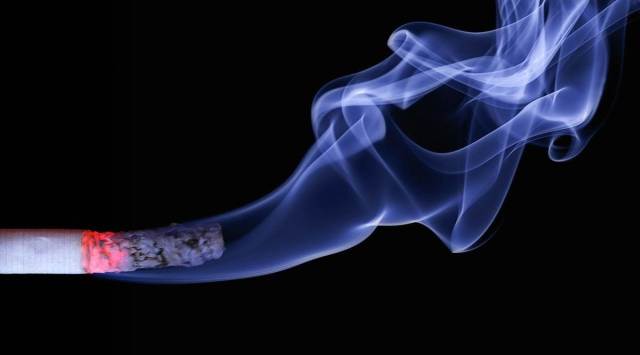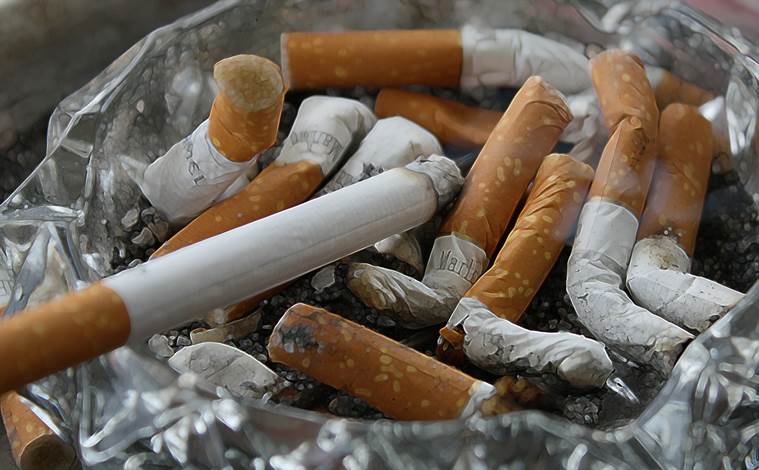- India
- International
Here’s what happens when you quit smoking and consuming tobacco
It is a known fact that smoking tobacco, or consuming it in other forms can negatively impact health, causing many diseases, including cancers of lungs, esophagus, liver, stomach, pancreas, and kidney
 The early withdrawal symptoms are likely to be rough, a doctor warns, (Photo: Pixabay)
The early withdrawal symptoms are likely to be rough, a doctor warns, (Photo: Pixabay) Tobacco addiction is real. Fighting the urge and eventually giving up on it is a difficult process, but not an impossible one. While there are millions of smokers in the world, there are also those that are tobacco-addicts but do not smoke. Smokeless forms of tobacco include paan, paan masala, areca nut and slaked lime preparations.
It is a known fact that smoking tobacco, or consuming it in other forms can negatively impact health, causing many diseases, including cancers of lungs, esophagus, liver, stomach, pancreas, and kidney. As such, Dr Sunny Garg of Manipal Hospitals Dwarka, New Delhi, shares with indianexpress.com some methods that can be used for tobacco de-addiction.
“Addiction in any form is not easy to give up on. Your body gets accustomed to the substance and may depict withdrawal symptoms at first, like racing heartbeat, palpitations, and more,” he says.
This five-step strategy is commonly used by de-addiction specialists:
1. ASK: All tobacco users are asked a set of questions to learn more about them and their willingness to quit.
2. ADVISE: All tobacco users are strongly urged to quit tobacco.

3. IDENTIFY: It is identified as to who is willing to quit tobacco and who is not.
4. ASSIST: Then, they are assisted by various methods to help them quit their habit.
5. ARRANGE: Regular follow-ups are arranged to ensure they are adhering to their quitting practices.
“Various pharmacological interventions are available to help quit tobacco dependence, depending upon how severe it is. Some of them are nicotine formulations (gum, patch, nasal or oral inhaler, lozenges), bupropion, varenicline, clonidine, nortriptyline, etc.,” the doctor says.
The impact of quitting tobacco consumption, over a year
The early withdrawal symptoms are likely to be rough, Dr Garg cautions.
 Various pharmacological interventions are available to help quit tobacco dependence, depending upon how severe it is. (Photo: Pixabay)
Various pharmacological interventions are available to help quit tobacco dependence, depending upon how severe it is. (Photo: Pixabay)
Within 20 minutes:
– Blood pressure drops to normal
– Pulse rate returns to normal
– Body temperature of hands and feet increases to normal
Within 8 hours:
– Carbon monoxide level in blood drops to normal.
– Oxygen level in blood increases to normal.
– Smoker’s breath disappears.
Within 24 hours:
– Your chance of a heart attack decreases.
Within 48 hours:
– Nerve endings start to re-grow.
– Your ability to smell and taste is enhanced.
Within 72 hours:
– Bronchial tubes relax making it easier to breathe.
– Lung capacity increases making it easier to do physical activities.
Within 2 weeks — 3 months:
– Circulation improves.
– Walking becomes easier.
– Lung function increases up to 30 per cent.
Within 1 — 9 months:
– Coughing, sinus congestion, fatigue, shortness of breath decrease.
– Energy level increases.
– Cilia regrow in lungs, increasing the ability to handle mucus, clean lungs, and reduce infection.
Within one year:
– Risk of coronary heart disease is half.
For more lifestyle news, follow us: Twitter: lifestyle_ie | Facebook: IE Lifestyle | Instagram: ie_lifestyle
Apr 25: Latest News
- 01
- 02
- 03
- 04
- 05


























